“Kolobok” is the most popular red gooseberry variety grown in summer cottages and garden plots. Despite such a “frivolous” name, this gooseberry is appreciated by gardeners for its high yield and easy care. In cooking, it is positioned as a table variety, since its berries have excellent taste and are widely used in the preparation of various desserts. A detailed description of the variety and features of growing gooseberries “Kolobok” will be discussed in this article.
Variety description
Variety “Kolobok” was bred by VSTISP breeders by crossing two very popular gooseberry varieties “Pink 2” and “Change”. In 1988, after a short and very successful trial, it was entered into the State Register and allowed to grow in several regions of Our Country: Central, Central Black Earth, Volga-Vyatka and East Siberian.
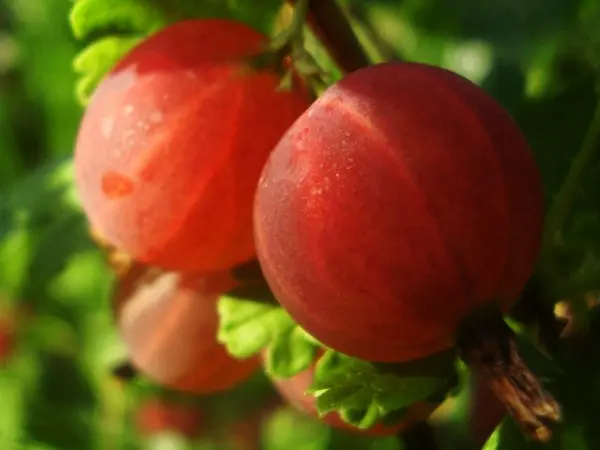
In terms of ripening, gooseberries are mid-ripening – the berries reach full maturity by mid-July. The bush differs in the impressive sizes. Its external description is as follows: vigorous, branches are powerful, spreading, sloping to the bottom, young shoots are very long, slightly branched, smooth (without thorns and not pubescent). The bark of lignified shoots is light gray, smooth – the thorns are located only at the nodes of the leaves perpendicular to the branch.
The leaves are large, green above, glossy, below – grayish, matte. The edges of the leaf plates are even, serrated, rounded at the petioles. Petioles are short and smooth, on the shoot are located at an acute angle. The flowers are pinkish-green, collected in small brushes. One brush contains large and medium flowers. Peduncle short, forked.
The berries of the Kolobok variety are medium (3–4 g) and large (5–7 g). On bushes that have been properly cared for, berries can grow up to 8 g. The shape of the berries is round, sometimes slightly elongated, dark red in color. The peel is of medium density, with a slight waxy coating. The pulp is very juicy, sweet and sour, crispy, contains few small seeds. The sugar content in the pulp is 8,7%, ascorbic acid is 25 mg, there are many anthocyanins. The berries are easily removed from the branch, but do not crumble when ripe.
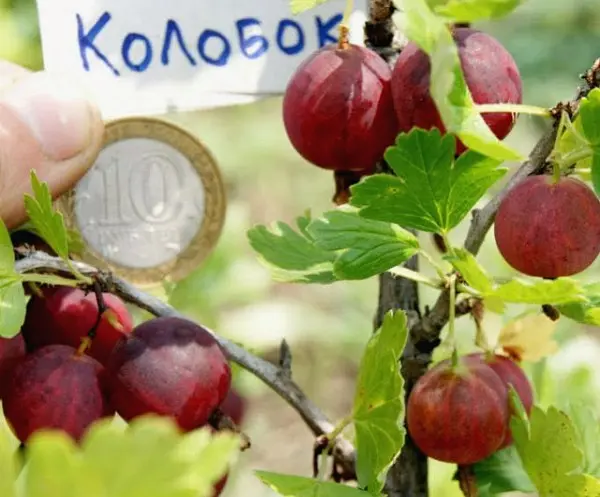
Characterization
Gooseberry variety “Kolobok” grows well and bears fruit in areas with a temperate continental climate. But if you provide the right care and optimal conditions, then its cultivation can be quite successful even in harsh climates with cold and long winters. This variety perfectly tolerates severe frosts, but is afraid of sudden changes in temperature – a sudden thaw and a drop in the degree to zero cause irreparable harm to the shrub and can lead to its death.
This is a significant drawback of the variety, however, for residents of regions with consistently frosty winters, this is rather an advantage, since it is not easy to choose a frost-resistant gooseberry variety for their climate. Another disadvantage is low drought tolerance. In the absence of rain, gooseberries need to be watered periodically, and maintaining normal soil moisture is the main care for the crop.
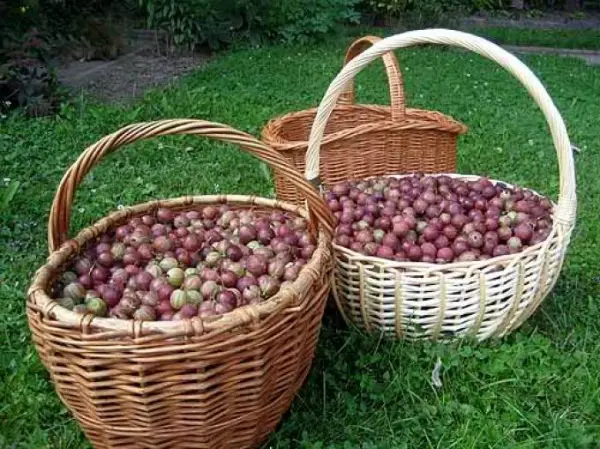
However, the “Kolobok” variety also has positive aspects that make it a favorite among other types of gooseberries. Of its advantages can be noted:
- high survival rate of young shoots;
- a small number of thorns (thorns) on the shoots;
- high frost resistance (this variety can be grown even in Siberia);
- good resistance to infectious and fungal diseases (many gardeners noted that when other gooseberry species growing in the garden are affected by powdery mildew, the Kolobok variety remains healthy);
- high yield (providing proper care, up to 10 kg of berries can be removed from one bush);
- excellent presentation of berries (ripe gooseberries are well transported, and do not crumble from the branches for a long time).
Peculiarities of growing
Gooseberries of this variety can be planted in autumn or early spring. Autumn planting is more successful, because the seedlings will have time to take root before frost, and by the spring of next year a full-fledged young bush will already grow. Spring planting should be done around mid-March to allow the seedlings to develop a root system before the growing season begins.
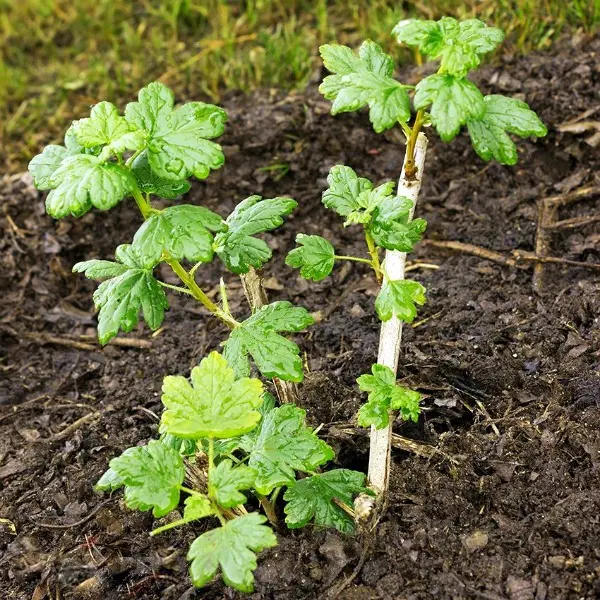
When choosing a place where gooseberries will be planted, the following recommendations should be observed:
- The area should be open to the sun.
- Groundwater should be located at a depth of 1,5–2 m. This gooseberry does not like drought, but excessive humidity is harmful to it, as it contributes to the development of fungal diseases.
- Currants and raspberries are considered bad predecessors for seedlings – planting after these crops leads to frequent diseases of the bushes.
- The soil should be loose, fertile, neutral or slightly acidic.
The landing itself is carried out in the following sequence:
- A hole is dug with a width and depth of about 0,5 m. For an autumn planting, a hole is dug out in 2-3 weeks, in the spring – in a week.
- Compost and ash are laid out at the bottom of the pit, if planting occurs in the spring, then mineral mixtures (potassium sulphate, superphosphate) are also added to the pit.
- The seedling is placed vertically in the hole, and covered with earth so that the root neck is deepened by 6–7 cm.
- The bush is well watered and the shoots are cut so that 5-6 buds remain on each.
- Finally, seedlings are mulched with peat, humus or other organic materials – the mulch will prevent moisture from evaporating and crusting.
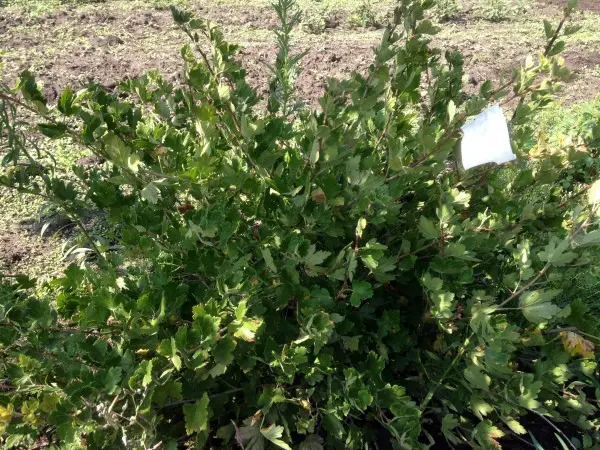
Further care for gooseberries includes the following activities:
- systematic removal of weeds and loosening of the soil around the bushes and between rows (if there is no mulch);
- watering if necessary (watering should be strictly under the root, sprinkling is not recommended, as it contributes to the appearance of fungal diseases);
- complex top dressing 1 time / 1 year (compost 0,5 buckets / 1 bush, superphosphate 50 g, ammonium sulfate 25 g and potassium sulfate 25 g);
- regular pruning and shaping bushes.
Pruning shoots is a mandatory measure, as the bushes are prone to strong thickening. As already mentioned, the first pruning is carried out immediately after planting the seedlings. In the second year, all weak shoots that have not reached a length of 20 cm, as well as those located near the ground, should be eliminated. In subsequent years, it is only necessary to thin out the crown, cut the shoots and get rid of the basal branches.
The formation of fruit-bearing bushes is carried out in the spring. During pruning, all basal shoots and those on which there are no ovaries should be removed, and they interfere with the growth of the bush. Shoots strongly inclined to the ground are shortened. After the end of fruiting, the branches are cut again – next year they will form most of the crop.
If proper care is provided, the bushes begin to bear fruit for 3-4 years, and consistently give a high yield for 10-15 years.
Video “Gingerbread Gooseberry”
We offer you a small review of the gooseberry “Kolobok”. You will get acquainted with its features and cultivation experience.









